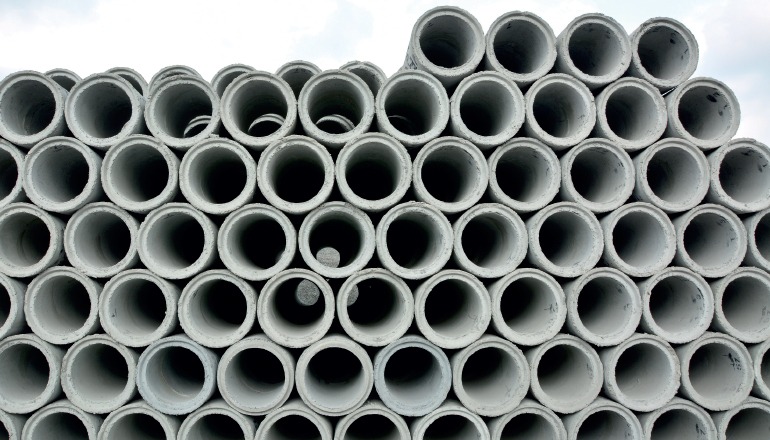Anecdotal evidence points to a slight increase in the incidence of cracks appearing in newly-laid concrete stormwater pipes. The Concrete Pipe Association says multiple factors underpin the issue, but that a better “awareness” at construction sites will eliminate most of the problem. LAWRENCE SCHÄFFLER reports.
While evidence of pipe cracking relative to the amount of infrastructure being installed around the country is small, and the vast majority of projects are being installed successfully, any discovery of cracks in a newly-installed stormwater infrastructure isn’t great news: It often means re-excavating parts of the pipeline to replace cracked sections. An expensive, time-sapping delay.
Cynics might attribute more cracks to a greater use of camera technology. CCTV inspections of newly-installed infrastructures are almost de facto today – ergo, they’re merely better at revealing a problem that has been there, unnoticed, all along.
Australasia’s Concrete Pipe Association (CPA) disagrees. It accepts that the greater use of CCTV partially explains the increase, but insists there are other causes.
Sources we talked to refered to multiple possible causes; one of the most common being damage caused by heavy construction equipment driving across back-filled trenches after the pipes have been installed. These are typically big front-end loaders, bulldozers and dump trucks filled with soil, aggregate or rubble, or vibration rollers.
Any pipeline, however correctly designed, specified and installed, can be subjected to excessive loading afterwards – often when large earthmoving vehicles drive across the back-filled trench, and axle loads can be well in excess of the pipeline’s design specification.
Suffice to add, contractors should have greater awareness around the site with heavy vehicles kept to designated areas away from the trenches.
Excessive load problems can be an issue with pipes laid under a road and road-building crews refilling the trench want to ensure that the aggregate is well-compacted before laying the asphalt, but then over-compaction can also impart excessive loads on pipes.
Pipeline installation also needs a correctly prepared bed – with the pipe sections supported uniformly along their lengths, because uneven beds will magnify the potential for damage from a random, excessive load. Pipes are not designed to act as load-bearing concrete ‘beams’ by only being supported at either end with nothing in the middle. That’s an invitation to trouble.
Severity of cracking
Concrete pipes used in stormwater installations are usually between 225mm and 300mm in diameter, and 2.4m to 2.5m long. They’re usually affected by two types of cracks – longitudinal and circumferential. The former occur along the length of the pipe, the latter around its circumference.
However, longitudinal cracking is very rare and any issue is likely to be with circumferential cracking and it typically occurs when the pipe is forced to act as a beam.
All pipes are manufactured to a joint Australia/New Zealand precast concrete pipe standard – AS/NZS 4058. A related standard – AS/NZS 3725 – covers the design for the installation of buried concrete pipes.
As part of the manufacturing process, batches of pipes are randomly selected for a longitudinal proof load test. This places a compression load on the pipe and allows for a crack with the maximum width of 0.15mm. This easily meets the standard’s requirements.
While the industry generally welcomes greater use of CCTV for post-installation inspection, the camera has a fish-eye lens which magnifies cracks so they look much larger than they actually are – particularly under lights.
So the technique does need, say experts, education in terms of interpreting the footage. It has also been pointed out that concrete has the characteristic of ‘autogenous healing’, where the calcium carbonate in the cement reacts with water and oxygen, leaching from the concrete as a granular white powder. The powder fills and seals cracks. Research has shown it’s effective with cracks up to 0.5mm in diameter.


Parting words from Jeremy Sole- a final column